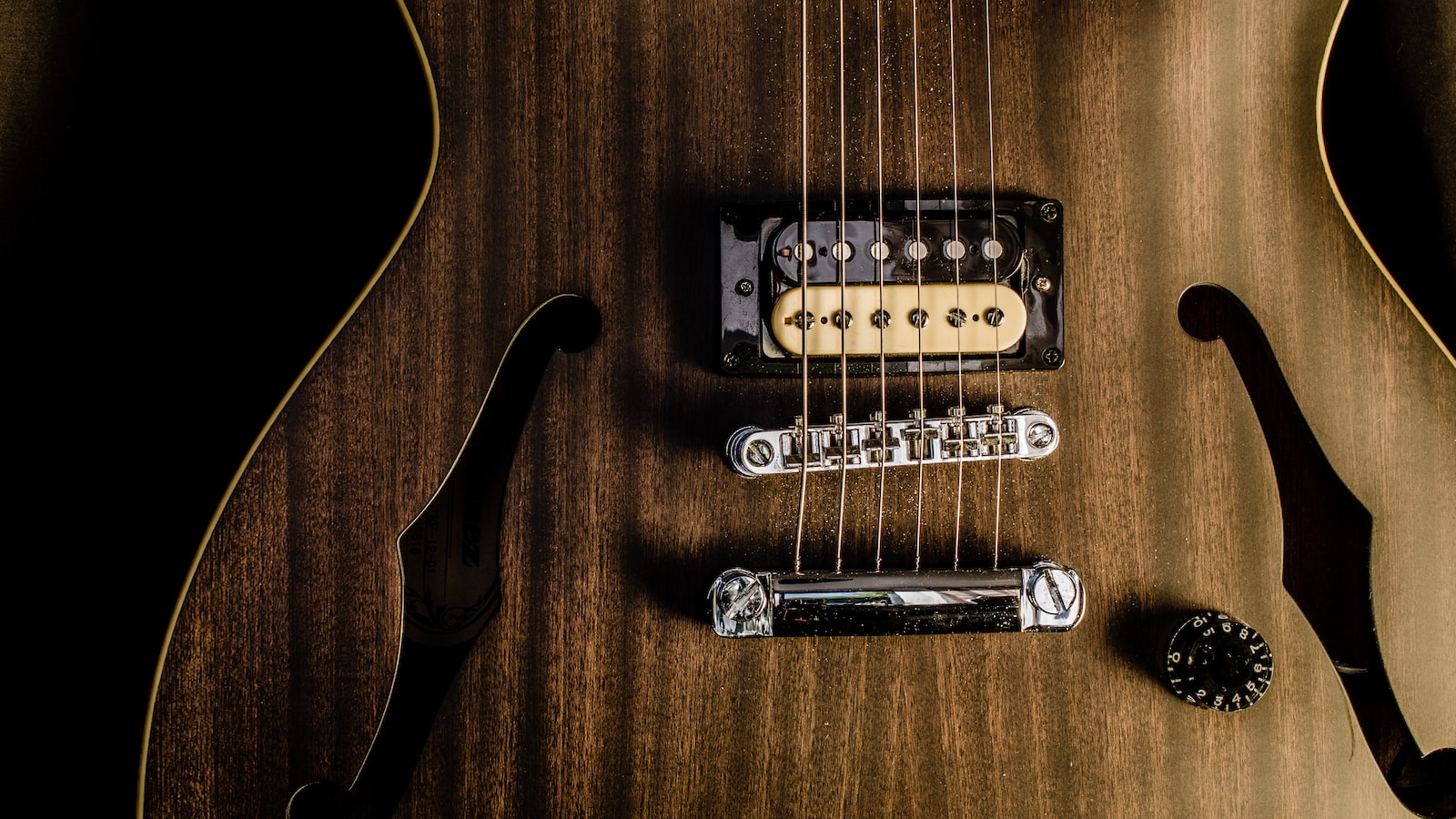In a world of enchanting rhythms and magnetic melodies, there’s one instrument that stands tall, beckoning us to join its musical journey – the guitar. This six-stringed wonder has charmed generations, becoming a steadfast companion for those seeking solace, expression, or simply a good old-fashioned strumming session. Whether you’ve never laid hands on these frets before or embarked on a timid exploration of its harmonious boundaries, this article beckons you to take that leap, unlocking melodies and unearthing hidden talents as we present our beginner’s guide to playing the guitar. So, grab your musical passport and prepare to embark on a musical odyssey like no other, as together we venture into the magical realm of guitar playing.

Fundamental Techniques: Mastering the Basics to Play the Guitar
To begin with, one of the most essential techniques to grasp is proper finger placement. Learning how to place your fingers on the frets correctly is vital for producing clear and accurate notes. Dedicate time to practicing this technique, ensuring your fingertips are pressing the strings firmly against the fretboard while maintaining a relaxed hand position. With practice, you’ll build muscle memory, allowing for smooth transitions between chords and notes.
- Strumming: Mastering the art of strumming is another fundamental technique aspiring guitarists should focus on. Varying the speed, strength, and direction of your strumming hand can drastically alter the sound produced. Experiment with different strumming patterns to develop your musical expression and to add rhythm to your playing.
- Picking: Learning how to pick individual strings with precision is another indispensable technique. By using a guitar pick or your fingers, you can create distinct sounds and execute melodic phrases efficiently. Practice alternate picking, downstrokes, and upstrokes to enhance your picking technique and achieve fluidity in your playing.
- Chord Transitioning: Seamlessly transitioning between chords is essential for any guitarist. Start by learning common open chords, such as C, G, and D, and slowly progress to more complex chord structures. Focus on accuracy and speed, gradually building your muscle memory to ensure smooth transitions while maintaining the rhythm of the music.
Achieving mastery in these fundamental techniques is the first step towards becoming a proficient guitarist. Always remember to practice regularly, be patient with yourself, and celebrate the progress you make along the way. With dedication and perseverance, you will unlock the doors to a world full of beautiful melodies and endless musical possibilities!

Understanding the Anatomy of a Guitar: Components and Functions
The Body: The body of a guitar is typically made of wood and holds all the essential components. It is responsible for producing the guitar’s sound and resonance. The body comes in various shapes such as dreadnought, concert, and jumbo, each contributing to the instrument’s unique tone. It is where the soundhole, or sound chamber, is located, which allows the vibration of the strings to resonate and amplify.
The Neck: Connected to the body, the neck provides support for the strings and frets. It is usually made of a single piece of wood, such as maple or mahogany, and contains the guitar’s truss rod, which helps adjust the neck’s curvature to ensure optimal playability. Attached to the neck are metal frets, small dividers that divide the neck into playable segments. Guitarists press the strings against these frets to produce different notes and chords, enabling them to play melodies and create harmonies.
- The fretboard, made of wood like rosewood or ebony, is affixed to the neck and displays the position of the frets.
- The headstock, located at the end of the neck, holds the tuning pegs. These pegs allow for the tuning of each string, adjusting their pitch as needed.
- The nut, a small piece at the top of the neck, spaces out the strings evenly and helps maintain their height and alignment.
- The neck also features markers or inlays, which act as visual guides to help players navigate the fretboard with ease.
Understanding the anatomy of a guitar and its components is essential for any aspiring musician or music enthusiast. It sets the foundation for exploring the instrument’s capabilities and improving your playing skills. By knowing the different parts and their functions, you can make informed decisions when selecting a guitar that suits your playing style and preferences. So, whether you’re strumming away on a classical guitar or shredding on an electric, take the time to appreciate and understand the inner workings of this incredible instrument.

Choosing the Right Guitar: Exploring Different Types and Finding Your Fit
When it comes to choosing the right guitar, there is an exciting world of options to explore. Each type of guitar possesses its own unique qualities that contribute to different sounds and styles of playing. Whether you are a beginner or an experienced guitarist looking to expand your collection, understanding the differences between various types can help you find your perfect match.
Acoustic guitars are one of the most popular choices, known for their beautiful, rich tones that resonate without the need for amplification. On the other hand, electric guitars offer a whole new world of possibilities with their ability to produce a wide range of tones and effects through amplification. Additionally, classical guitars, distinguishable by their nylon strings, are renowned for their warm and mellow sound, making them ideal for classical, flamenco, or folk music.
Finding your fit requires considering your musical preferences and playing style. Do you prefer the soft, natural tones of an acoustic guitar or the versatility and effects of an electric guitar? Maybe you are drawn to the expressive and rich sound of a classical guitar. Take your time to research, seek advice, and visit music stores to try out different types and get a feel for each one. Ultimately, finding the right guitar means finding the one that resonates with your musical soul and inspires you to create beautiful melodies.

Learning to Read Tabs and Chords: A Simple Breakdown
Are you ready to embark on an exciting journey to expand your musical prowess? Learning to read tabs and chords is like gaining a passport to a new language specific to the guitar. With a simple breakdown, you’ll soon find yourself strumming, picking, and plucking your way to musical mastery.
So, what exactly are tabs and chords? Imagine tabs as a visual representation of your guitar’s fretboard, guiding you on the exact placement of your fingers. It’s like a treasure map, revealing the secret locations for your hands to create melodies and chords. On the other hand, chords represent a combination of specific notes that harmonize beautifully, producing that magical sound. Together, tabs and chords unlock a world of possibilities, allowing you to play your favorite songs and even compose your own unique tunes.
Tablature (Tabs): Quick Glance
Mastering tabs enables you to play melodies, riffs, and solos easily. Here’s what you need to know:
- Tabs have six horizontal lines, each representing a string on your guitar.
- Numbers on the lines indicate which fret you should press down. Higher numbers mean higher frets!
- String numbers typically appear on the left side of the tab, helping you identify which string to play.
- Multiple numbers stacked vertically indicate you should play those notes simultaneously, creating chords.
- With practice, reading tabs will become second nature, and before you know it, your fingers will effortlessly glide across the fretboard.
Chords: The Harmony of Music
No guitar journey is complete without delving into chords:
- Chords are represented by various symbols and names such as Em, Cmaj7, or G#.
- Each chord has a unique finger placement on specific frets, forming harmonic combinations that define countless songs.
- Understanding chord charts or diagrams is essential to grasp the finger placement for each chord.
- Playing chords involves strumming or picking multiple strings simultaneously, creating a fuller sound.
- Mastering chords empowers you to accompany yourself or others while singing, take part in jam sessions, and express your deepest emotions through melodic harmonies.
So, let the fascinating world of tabs and chords enchant you. Dive in, start practicing, and embrace the beautiful language of the guitar. The more you explore and experiment, the more fluent you will become, opening doors to a lifetime of musical fulfillment.
In Summary
As we strum our final chords and reach the end of this beginner’s guide to playing the guitar, we hope you’ve found yourself captivated by the enchanting melodies that lie within those six strings. Like a key to a hidden treasure, unlocking the world of guitar playing has the power to awaken dormant passion and ignite a newfound sense of musical exploration.
Throughout this journey, we’ve unraveled the secrets of proper hand placement, mastered the art of picking, and delved into the fundamental chords that form the backbone of countless timeless tunes. But beyond the technical aspects, we’ve also discovered that playing the guitar is more than just a skill – it’s an artistic expression that knows no boundaries.
Whether you dream of strumming by a bonfire, serenading a loved one, or rocking out on a grand stage, the guitar offers endless possibilities for those willing to embark on this melodic adventure. It is a gateway to self-discovery, a tool of self-expression, and a vessel for emotions too deep for words alone.
So, as your fingertips become calloused warriors and your rhythm becomes second nature, remember to be patient with yourself. Every great guitarist was once a beginner, fumbling with frets and struggling to conquer complex chords. Embrace the learning process, relish each stumble, for it is within those moments of perseverance that true growth occurs.
As you embark on your own path, never hesitate to explore new techniques, experiment with different genres, and seek inspiration from the guitar legends that came before you. Remember that the beauty of music lies in its ability to evolve and adapt, and the guitar is a boundless canvas upon which you can paint your sonic masterpiece.
In this final strum, we bid you farewell, knowing that you now possess the knowledge and tools to unlock the melodies that reside within the guitar’s soul. May your fingertips dance across the strings with grace and may your heart sing with every note you create. The world of guitar playing awaits – now it’s your turn to write your own musical story.

